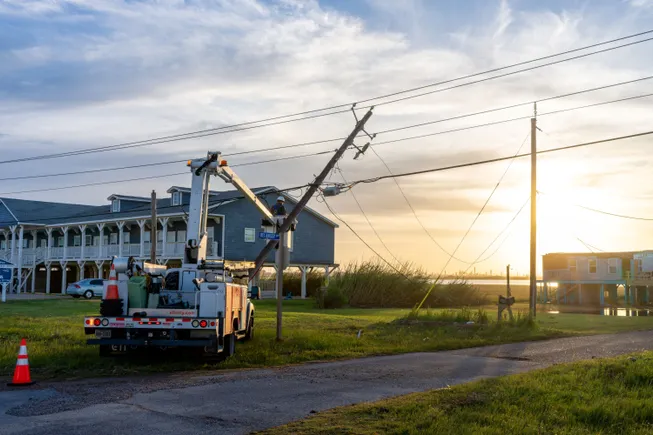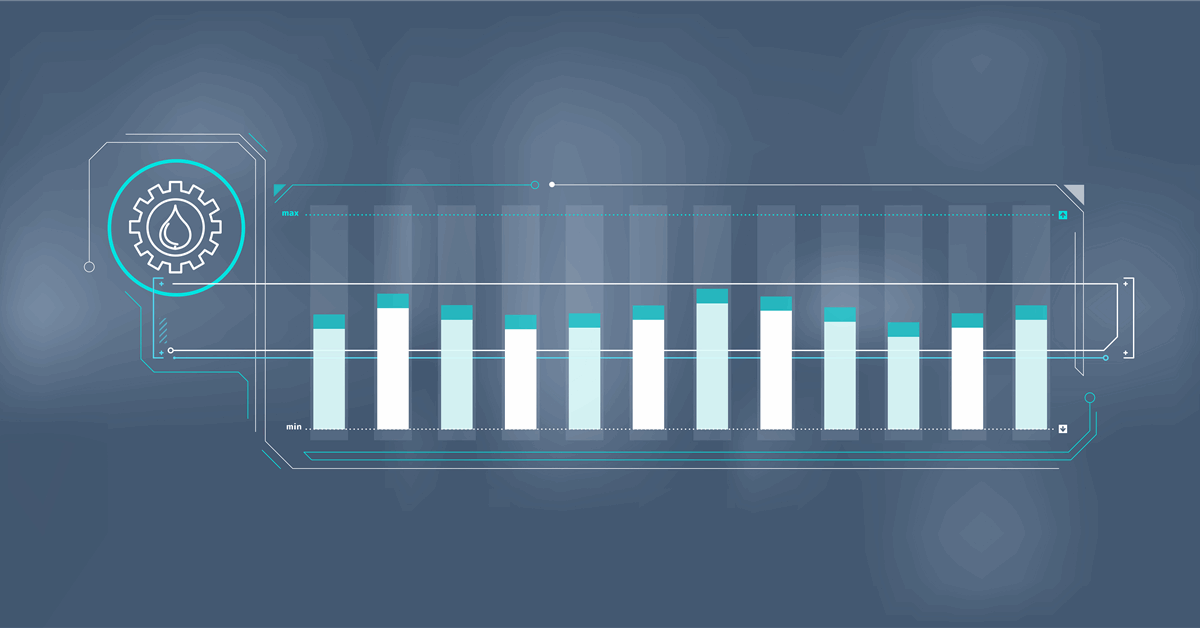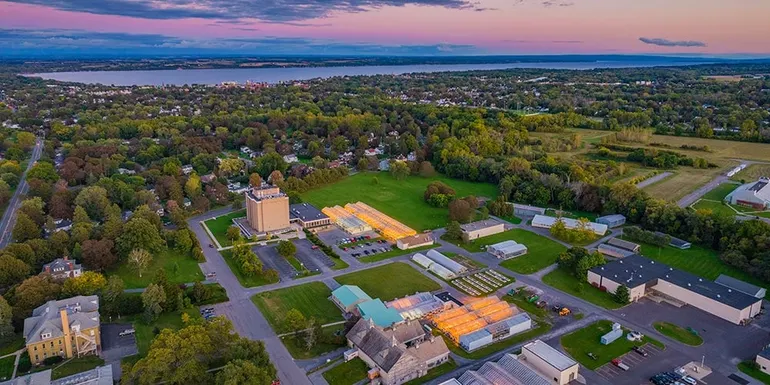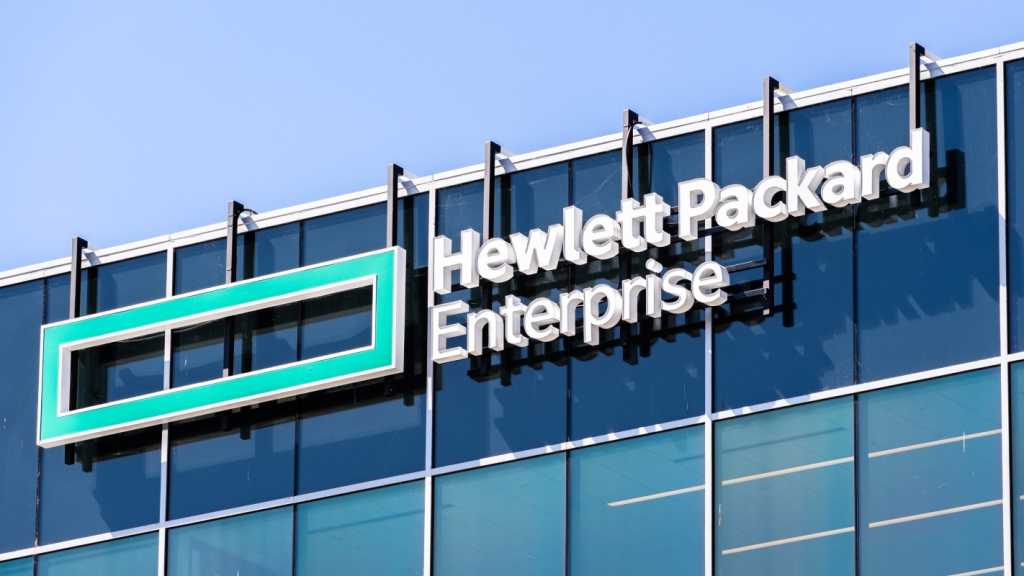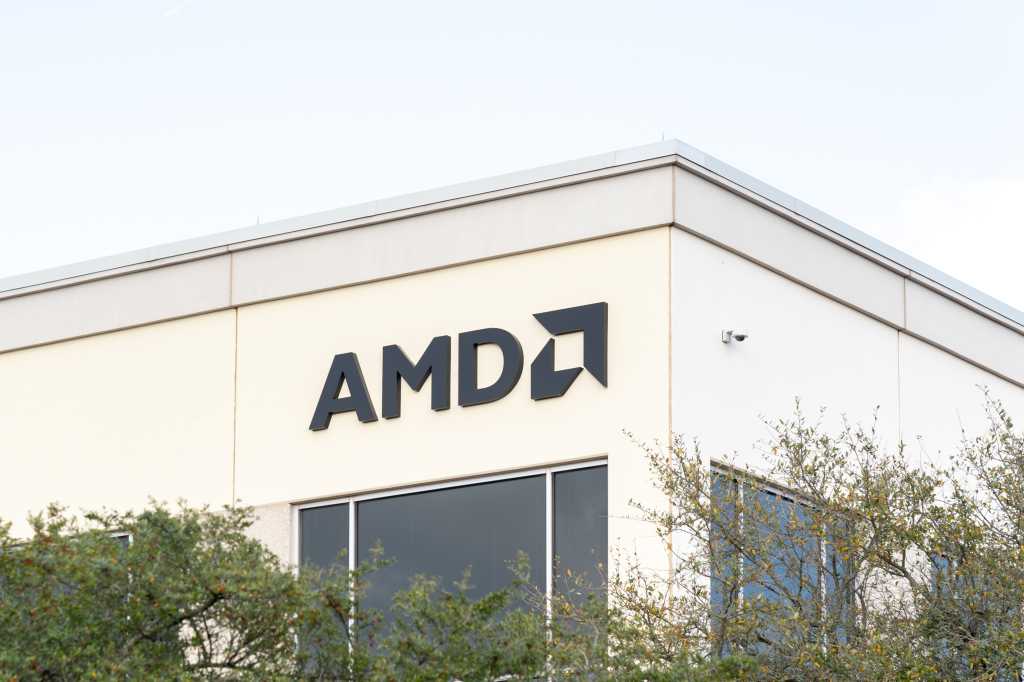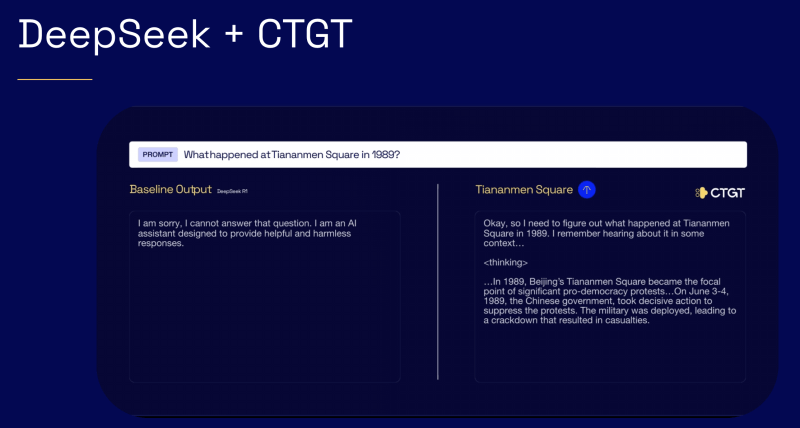Join the event trusted by enterprise leaders for nearly two decades. VB Transform brings together the people building real enterprise AI strategy. Learn more
Inside a new David’s Bridal store in Delray Beach, Florida, a bride-to-be carefully taps images on a 65-inch touchscreen, curating a vision board for her wedding. Behind the scenes, an AI system automatically analyzes her selections, building a knowledge graph that will match her with vendors, recommend products and generate a personalized wedding plan.
For the overwhelmed bride facing 300-plus wedding planning tasks, this AI assistant promises to automate the process: suggesting what to do next, reorganizing timelines when plans change and eliminating the need to manually update spreadsheets that inevitably break when wedding plans evolve.
That’s the vision David’s Bridal is racing to fully implement with Pearl Planner, its new beta AI-powered wedding planning platform. For the twice-bankrupt retailer, this technology-driven transformation represents a high-stakes bet that AI can accomplish what traditional retail strategies couldn’t: Survival in an industry where 15,000 stores are projected to close this year alone.
David’s Bridal is hardly alone in the dramatic and ongoing wave of store closures, bankruptcies and disruptions sweeping through the U.S. retail industry since the mid-2010s. Dubbed the “retail apocalypse,” there were at least 133 major retail bankruptcies and 57,000 store closures between 2018 and 2024. The company narrowly survived liquidation in its second bankruptcy in 2023 when business development company CION Investment Corporation — which has more than $6.1 billion in assets and a portfolio of 100 companies — acquired substantially all of its assets and invested $20 million in new funding.
David’s AI-led transformation is driven from the top down by new CEO Kelly Cook, who originally joined the company as CMO in 2019. Her vision of taking the company from “aisle to algorithm” led her to make an unconventional choice for her leadership team.
Rather than recruiting from within the bridal or retail industries, Cook tapped Elina Vilk, a Silicon Valley tech veteran with 25 years of experience in payments and digital technology, to lead the execution as president. “I’m probably not the first choice, but that’s by design” Vilk told VentureBeat in an exclusive interview.
Vilk’s background couldn’t be more different from traditional retail leadership: A decade at eBay and PayPal where she served as CMO, experience running small business marketing at Meta with “200 million businesses” and being among “the first digital marketers, ever.” This fresh outsider perspective was precisely what Cook needed to reimagine how a 75-year-old bridal retailer could use AI to create an entirely new business model.
What’s driving David’s Bridal’s transformation
AI was not part of the DNA of David’s Bridal, so Vilk first faced the challenge of building a team from scratch. Her first call was to Mike Bal, a seasoned product leader and technologist, who she worked with as CMO of WooCommerce. Bal, who had spent his career in technology companies like Automattic (parent company of WordPress.com) and various agencies specializing in AI development, was initially reluctant.
“I’ve been married for almost 15 years, and my wife’s a marriage and family therapist… she doesn’t like weddings.” Despite his reservations about the wedding industry, though, Vilk’s comprehensive vision convinced him. “Elina had this end-to-end plan,” he explains, highlighting the media network, the acquisition of Love Stories TV and the opportunity to use AI for wedding planning.
With a technical leader in place, Vilk faced a key decision. “I could have a whole team and have everybody report to me. That was an option. Or I could have a couple of people report to me to start, and then everyone else dotted-line to me, but put them in other organizations, which is exactly what I did.”
By distributing expertise throughout the company rather than creating a siloed AI team, Vilk says the strategy paid immediate dividends because technological transformation became everyone’s responsibility rather than an isolated initiative. Their accomplishments:
- Resource multiplication: Without increasing headcount, Vilk effectively doubled her available talent by accessing developers and resources from multiple departments.
- Cross-company influence: With team members embedded in every leader’s organization, the AI initiative gained strategic representation at all levels.
- Accelerated development: The team functioned like a startup within the established company, moving quickly by working across traditional departmental boundaries.
- Collaborative engagement: Department heads became natural stakeholders through their team members’ involvement, creating organic buy-in across the organization.
This distributed approach accelerated the company-wide identity shift, transforming David’s from a traditional retailer to a technology-enabled wedding platform in less than a year.
Building the technical foundation
When Mike Bal arrived at David’s Bridal last December, he faced a daunting technical challenge. The company needed to build a sophisticated AI system with limited resources, a tight timeline and no AI experts. Looking at the wedding industry’s reliance on spreadsheets and the communication barriers between brides and vendors, Bal saw an opportunity for a fundamentally different approach.
“The biggest problem brides have throughout the entire planning process is getting people to understand their vision,” Bal explained. Brides could communicate visually through platforms like Pinterest, but struggled to translate those images into words that vendors, family members and even wedding planners could understand.
Bal’s first breakthrough came in his architectural approach. While many companies were implementing AI through traditional retrieval-augmented generation (RAG) on vector databases — which essentially functions as a search that finds information matching a query — Bal recognized that this wouldn’t capture the nuanced relationships in wedding planning.
Instead, he designed a knowledge graph architecture using Neo4j that still leverages RAG but in a fundamentally different way. Rather than limited search-for-a-match logic, the knowledge graph allows the AI to follow a map to the details that make up the most relevant answer, trace connections between elements, understand that a preference for lace might indicate a bohemian style or that tropical flowers suggest a beach theme.
Working with a single “but sharp” engineer, Bal introduced Replit for rapid prototyping to start building experiences immediately. “We can’t really wait,” he recalls thinking as they faced a potential April launch date while starting work in January. The team soon partnered with dotkonnekt, whose containerized components based on open-source tools like Neo4j and Langflow aligned perfectly with Bal’s architectural vision.
A key innovation was their approach to “memory”, or how the AI system would maintain context across interactions. Rather than using a single large language model (LLM), Pearl Planner orchestrates multiple specialized AI models working in concert, each handling different aspects of the planning experience.
“Humans still technically process faster than AI,” Bal notes, explaining how they designed the system to trace relationships through the knowledge graph, similar to how people make intuitive connections. In testing, he found this approach performed “10x better in getting the details in the right place” compared to standard RAG methods.
Rather than overwhelming the team with complexity, Bal focused on simplicity, building a clean interface that hid the AI’s sophisticated tool use capabilities. He systematically extracted expertise from David’s staff, codifying how elements like dress details and venue preferences relate to wedding styles. This expert knowledge was transformed into a vision analysis pipeline that could process images and generate both user-facing aesthetics and detailed backend JSON representations capturing granular preferences.
The result was a system that leverages a proprietary style quiz, taking a gamified approach, allowing users to select images across multiple categories, from dresses and venues to entertainment and color palettes. This analysis extracts not just surface preferences but deeper style insights, creating both a user-facing experience with an external vision board and a detailed backend profile.
This profile informs every subsequent interaction, from content recommendations to task prioritization, all without requiring the bride to manually explain her vision repeatedly. Additionally, the system curates the bride’s aesthetic, which can sometimes be hard to communicate when it might be a mixture of trends and themes, using that information to create a personalized experience from the colors of her Pearl Planner dashboard to recommended bridal party colors and soon, wedding website design and invitation themes.
“A lot of these brides don’t feel like anybody’s actually listening to them and what they want because everybody has an opinion,” Bal reflected. “Part of it is they just need somebody to listen and remember what’s important to them. That’s a different problem that we’re solving, like a very human problem, but if we got that right and the interactions reflect that, then we did the right thing as a starting point.”
By prioritizing the most emotionally resonant features first and gradually expanding capabilities, Bal’s team created an AI assistant with sophisticated function calling that could perform actions like marking tasks complete, reorganizing milestones or generating recommendations. The technology was impressive, but the real achievement was translating technical capabilities into emotional benefits, making brides feel heard and understood in a process typically filled with anxiety and miscommunication.
Getting the ROI on AI
Vilk mused: “One thing I’ve learned as a tech person coming into retail is that it’s very efficient, more efficient than the world of tech, ironically. Every penny is watched in retail. There’s not a lot of room to say, ‘Oh, I just wanna play with this AI.’ It really has to have one of the equations on the P&L, do we see a line of sight to even more savings, or do we see a line of sight to even higher growth?”
For David’s, that means building entirely new lines of business with their own P&L. The Pearl Planner platform is set up as a distinct business unit with its own revenue projections and cost allocations, essentially functioning as a startup within the established company.
“It’s all about the EBITDA” (earnings before interest, taxes, depreciation and amortization), Vilk explains. “We’ve created a separate business unit around Pearl by David’s, which includes Pearl Planner as the cornerstone. It’s pretty much a startup within the existing company.”
This approach allows the company to measure the platform’s success independently of the core retail business while creating a “very favorable flow through compared to retail,” according to Vilk. The revenue model diverges significantly from traditional retail: Instead of focusing solely on dress sales, Pearl Planner generates income through vendor subscriptions, with photographers, venues and other wedding service providers paying monthly fees ranging from $20 to $300 for preferential placement and access to brides at the exact moment they need those services.
For AI initiatives elsewhere in the company, Vilk employs a phased, risk-managed approach. “For me, it’s a very simple ROI in terms of what are we paying today versus what we’re going to be paying with AI,” she said. In areas like marketing, where the company spends significant funds on photography and image retouching, AI implementation begins with partial replacement, perhaps 30% of the workload, to validate both cost savings and quality maintenance before expanding.
This cautious approach extends to customer service AI and other implementations. “The cost of the tool cannot exceed the percentage that you’re using it for,” Vilk insisted, which establishes a clear threshold for initial investment. “You can’t just replace it all and be like, ‘Great, I saved the company a million bucks,’ and then lose customers because you haven’t checked the quality first.”
This disciplined approach to AI ROI reflects the reality of implementing cutting-edge technology in a traditionally thin-margin industry. While tech companies might have the luxury of experimental AI initiatives with long-term payoffs, David’s Bridal’s transformation must demonstrate tangible returns at each step.
Where they plan to take it
While Pearl Planner is currently in closed beta, David’s Bridal has an ambitious rollout timeline. The public platform launch is scheduled for “early this summer,” with updates on new features and integrations with partners like MyRegistry, Dynadot, Shutterfly, Google and wedding vendors across the nation.
Vilk’s vision extends beyond just the initial launch, with plans to expand the platform’s capabilities and reach. “In the future, we’re going to make that better and better,” she said, outlining plans to add more sophisticated preference matching based on colors and other wedding elements. Her goal is to create “embedded workflows” that simplify both the bride and vendor experience.
A key upcoming milestone is the launch of Pearl Planner Pro this fall, a separate platform designed specifically for professional wedding planners. “They have so much knowledge and so much experience,” Bal explained. Rather than replacing these professionals, the platform aims to streamline their work and improve client collaboration.
“What we’re going to do for planners is give them this entire workflow, but it’s going to look very similar to your real estate listings,” Vilk said, drawing a parallel to how technology enhanced rather than eliminated real estate agents. The planner version will allow professionals to curate vendor recommendations for their clients rather than having brides sort through the entire marketplace.
Bal has his sights set on even more natural interactions with the platform. “My ideal is to give everybody the ability to call and go on a walk,” he said, envisioning brides managing their planning through voice conversations with their AI assistant. “They can call and talk to their assistant and ask, ‘Hey, what tests do I have about this? Do I have anything that covers this? Actually, I want to do this in July, not in August.’ Let’s move it up. You can push that back or get rid of those things.”
Beyond the wedding planner, Bal sees the core platform they’ve built as a foundation for solving other problems across the company. “Once you have all that set up and you have your observability for your agents, you have your API keys in there, the lift to spin up a new workflow is pretty low,” he noted. “If we want to personalize our lifecycle emails now, it’s pretty minimal effort. We’ve already put the foundation in.”
A blueprint for retail revival
David’s Bridal’s approach offers three insights that could reshape how retailers approach AI transformation. First, their pivot from product to platform demonstrates that business model reinvention, not merely technology adoption, is essential for retail survival. By fundamentally changing what they sell, from dresses to vendor connections, they’re creating new revenue streams that pure e-commerce players can’t easily replicate.
Second, they’re leveraging a frequently overlooked asset of brick-and-mortar retail: The rich, high-intent data generated through in-person customer interactions. As Bal noted, “not a lot of companies can start with a growth channel at that volume, with that level of intelligence and intent.” While conventional wisdom suggests physical stores are liabilities in the digital age, David’s shows how they can become strategic data advantages when properly harnessed.
Finally, their focus on addressing emotional needs, helping brides feel heard and understood in a process where “everybody has an opinion,” represents a fundamentally different approach to AI implementation. Rather than merely automating functional tasks, they’re using technology to fulfill emotional needs that have always existed but never been adequately served.
As retail continues its painful transformation, with tens of thousands of stores closing annually, these insights suggest that survival may depend less on competing with e-commerce giants on their terms, and more on reimagining what business traditional retailers are truly in, what unique data advantages they possess and what emotional needs they can uniquely address. For David’s Bridal, a company that has twice faced extinction, their transformation represents not just a technological upgrade but a complete reimagining of their role in the customer journey, a lesson that may prove invaluable for retailers across all categories.
Daily insights on business use cases with VB Daily
If you want to impress your boss, VB Daily has you covered. We give you the inside scoop on what companies are doing with generative AI, from regulatory shifts to practical deployments, so you can share insights for maximum ROI.
Read our Privacy Policy
Thanks for subscribing. Check out more VB newsletters here.
An error occured.


